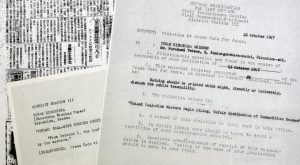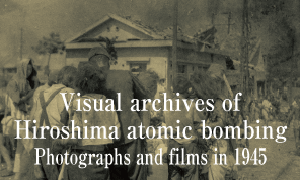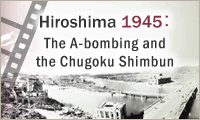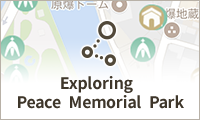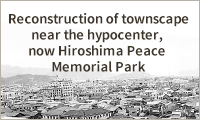Striving to fill voids in Hiroshima, Chugoku Shimbun and the press code — Diving into the materials, Part 5: Investigation into labor disputes reveals contradictions
Jul. 9, 2024
One of the policies for Japan’s democratization used by the General Headquarters of the Allied Powers (GHQ) was the development and support of labor unions.
In December 1945, during the early period of the occupation, the Labor Union Act came into force in Japan. By 1947, the Labor Relations Adjustment Act and the Labor Standards Act would also be enacted, which resulted in the establishment of three labor laws. Accordingly, three major labor rights — the right to organize, the right to collectively bargain, and the right to collective action — had been recognized.
With the backing of the GHQ, labor unions were formed one after another. In 1946, the percentage of organized workers reached 40% of the labor market, or around four million union members.
Meanwhile, violent labor disputes also arose frequently based on the right to collective action. Against the backdrop of hardships in people’s lives resulting from turmoil in the society after the war, workers in government offices and the Japan National Railways had been planning a general strike for February 1, 1947, but the GHQ ordered the strike to be called off. Activities related to labor disputes were also carefully monitored by strict censorship and other measures.
Three instances of violation
Upon investigation of materials involving censorship of the Chugoku Shimbun and the Yukan Hiroshima, a local evening newspaper, only a few articles covering local labor unions were found to have any evidence of censorship. However, three examples of articles covering labor disputes were discovered to have been deemed in violation of the press code.
One of the instances was an article featuring a labor dispute that had occurred at Fujino Seimen, a cotton manufacturing company located in the area of Nishikaniya-cho (in Hiroshima City’s present-day Minami Ward). On the front page of the Yukan Hiroshima published on September 20, 1947, an article headline in the original Japanese reads, “Labor and management conflict results in violence, bringing dispute at Fujino Seimen Company to the surface.”
In that case, the violence resulted from tensions within the labor union itself. Six union leaders who had been convicted in court offered to resign, but they were re-elected in an internal union election. The Yukan Hiroshima article reported how, after the company side refused to accept the election results, “a work slowdown begun started, with scrutiny focused on the course of events.”
The GHQ considered the article to have been in violation of the second article of the press code (‘nothing shall be printed which might disturb the public tranquillity’) and deemed it “Disapproved.”
Equivalent to “ban on publication”
At that time, national newspapers and other publications were subject to censorship prior to publication. On the other hand, many local newspapers, including the Chugoku Shimbun and the Yukan Hiroshima, were subject to post-publication censorship, in which published papers were censored after the fact. In the case of pre-publication censorship, “Disapproved” was equivalent to a “ban on publication.”
Furthermore, an article published by the Chugoku Shimbun on October 5, 1947, reporting on the settlement of the same dispute was judged “Disapproved,” because it, too, was found to be in violation of the press code’s second article.
The second instance was an article in the Yukan Hiroshima on October 12, 1947, titled “Densan Chugoku Branch preparing for struggle.” A section in the article describing how workers were preparing to begin battle starting October 15 if a minimum wage hike and other demands were not met was also determined to be in violation of the second article of the press code and therefore “Disapproved.”
The third instance involved the case of the Futami Coal Mine, located in present-day Odako-machi in Miyoshi City, which had begun during the war and continued afterward. According to the publication Miyoshi-shi Shi (in English, ‘History of Miyoshi City’), the Futami Coal Mine had been operated for eight years starting in 1943 as the Geibi Coal Mining Industries company, which was owned by Sanyo Senko in Fukuyama City.
On the front page of the Yukan Hiroshima published on October 15, 1947, the original Japanese headline read, “Futami Coal Mine begins slowdown due to rationing of supplies.” The labor union had demanded that the rations of labor supplies be doubled. The company responded that they would pay out bonuses to workers if coal-production increased. But the two sides failed to reach a consensus. The GHQ determined that instance of reporting to be in violation of article two and was “Disapproved” as a result.
The right of collective action for workers should have been recognized as part of Japan’s postwar reforms. In reality, however, when labor disputes were reported in the media, GHQ would halt publication. With that, the contradictions in GHQ’s occupation policies were exposed.
(Originally published on July 9, 2024)
In December 1945, during the early period of the occupation, the Labor Union Act came into force in Japan. By 1947, the Labor Relations Adjustment Act and the Labor Standards Act would also be enacted, which resulted in the establishment of three labor laws. Accordingly, three major labor rights — the right to organize, the right to collectively bargain, and the right to collective action — had been recognized.
With the backing of the GHQ, labor unions were formed one after another. In 1946, the percentage of organized workers reached 40% of the labor market, or around four million union members.
Meanwhile, violent labor disputes also arose frequently based on the right to collective action. Against the backdrop of hardships in people’s lives resulting from turmoil in the society after the war, workers in government offices and the Japan National Railways had been planning a general strike for February 1, 1947, but the GHQ ordered the strike to be called off. Activities related to labor disputes were also carefully monitored by strict censorship and other measures.
Three instances of violation
Upon investigation of materials involving censorship of the Chugoku Shimbun and the Yukan Hiroshima, a local evening newspaper, only a few articles covering local labor unions were found to have any evidence of censorship. However, three examples of articles covering labor disputes were discovered to have been deemed in violation of the press code.
One of the instances was an article featuring a labor dispute that had occurred at Fujino Seimen, a cotton manufacturing company located in the area of Nishikaniya-cho (in Hiroshima City’s present-day Minami Ward). On the front page of the Yukan Hiroshima published on September 20, 1947, an article headline in the original Japanese reads, “Labor and management conflict results in violence, bringing dispute at Fujino Seimen Company to the surface.”
In that case, the violence resulted from tensions within the labor union itself. Six union leaders who had been convicted in court offered to resign, but they were re-elected in an internal union election. The Yukan Hiroshima article reported how, after the company side refused to accept the election results, “a work slowdown begun started, with scrutiny focused on the course of events.”
The GHQ considered the article to have been in violation of the second article of the press code (‘nothing shall be printed which might disturb the public tranquillity’) and deemed it “Disapproved.”
Equivalent to “ban on publication”
At that time, national newspapers and other publications were subject to censorship prior to publication. On the other hand, many local newspapers, including the Chugoku Shimbun and the Yukan Hiroshima, were subject to post-publication censorship, in which published papers were censored after the fact. In the case of pre-publication censorship, “Disapproved” was equivalent to a “ban on publication.”
Furthermore, an article published by the Chugoku Shimbun on October 5, 1947, reporting on the settlement of the same dispute was judged “Disapproved,” because it, too, was found to be in violation of the press code’s second article.
The second instance was an article in the Yukan Hiroshima on October 12, 1947, titled “Densan Chugoku Branch preparing for struggle.” A section in the article describing how workers were preparing to begin battle starting October 15 if a minimum wage hike and other demands were not met was also determined to be in violation of the second article of the press code and therefore “Disapproved.”
The third instance involved the case of the Futami Coal Mine, located in present-day Odako-machi in Miyoshi City, which had begun during the war and continued afterward. According to the publication Miyoshi-shi Shi (in English, ‘History of Miyoshi City’), the Futami Coal Mine had been operated for eight years starting in 1943 as the Geibi Coal Mining Industries company, which was owned by Sanyo Senko in Fukuyama City.
On the front page of the Yukan Hiroshima published on October 15, 1947, the original Japanese headline read, “Futami Coal Mine begins slowdown due to rationing of supplies.” The labor union had demanded that the rations of labor supplies be doubled. The company responded that they would pay out bonuses to workers if coal-production increased. But the two sides failed to reach a consensus. The GHQ determined that instance of reporting to be in violation of article two and was “Disapproved” as a result.
The right of collective action for workers should have been recognized as part of Japan’s postwar reforms. In reality, however, when labor disputes were reported in the media, GHQ would halt publication. With that, the contradictions in GHQ’s occupation policies were exposed.
(Originally published on July 9, 2024)

